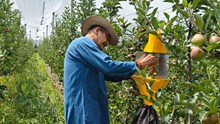
Green tea is more than a daily drink in Japan, it’s an integral part of its cultural identity. Whether served at a formal tea ceremony or enjoyed casually at home, Japanese green teas are prized for their variety of flavors, health benefits, and centuries-old production methods. Among the many types produced across the country, a few stand out for their popularity, taste, and uniqueness. Let’s take a closer look at the different kinds of Japanese green tea, where they come from, and why they are beloved both locally and globally.
Sencha
Sencha is the most commonly consumed green tea in Japan, accounting for a significant majority of national production. It is made from the first flush of tender leaves, harvested between late February and May. These leaves are steamed to stop oxidation, then rolled and dried.
The taste of sencha strikes a perfect balance, subtly sweet with a gentle astringency and a clean, grassy aroma. Rich in vitamin C, it’s especially favored by women and often enjoyed during afternoon tea breaks.
Sencha also comes in convenient variations:
-
Mizudashi-sencha, specially crafted for cold infusion, is a popular summertime refresher.
-
Funmatsucha, or powdered sencha, is used in both beverages and culinary recipes, offering versatility in everyday use.
Fukamushicha
Fukamushicha is essentially a deeply steamed version of sencha, with leaves subjected to longer steaming times, twice or even thrice as long. This extended steaming breaks down the leaves further, resulting in a tea that brews faster and yields a darker, more vibrant green color.
The taste of fukamushicha is mellow, smooth, and rich, with reduced bitterness. Its deeper aroma and soft mouthfeel make it gentle on the stomach, ideal for those who like to enjoy multiple cups throughout the day.
Kukicha
Kukicha, or “stem tea,” is made from the stalks, stems, and twigs left behind during the production of sencha, gyokuro, or matcha. While it might sound like a by-product, kukicha has earned its own following for its unique, clean taste and light fragrance.
One prized variety of kukicha is Karigane, made from the stems of gyokuro tea. It carries a refined flavor and is particularly refreshing when served in the morning. Kukicha is also lower in caffeine, making it a suitable option for those looking for a gentle yet energizing brew.
Konacha
Often called “tea powder,” konacha is what remains after the processing of sencha and gyokuro, tiny tea dust, buds, and broken leaf fragments. Despite its humble origin, konacha delivers a bold flavor, deep color, and brisk aroma.
This tea is famously served in sushi restaurants under the name agari, where its strong taste helps cleanse the palate. Its affordability and potent taste also make it a great ingredient for cooking, especially in savory dishes and sauces.
Bancha
Bancha is made from the mature leaves that grow after the first sencha harvest. These leaves are picked multiple times from June through October, with each picking producing a slightly different grade: nibancha (June), sanbancha (August), and yonbancha (October).
Compared to sencha, bancha has a coarser texture and a stronger, more astringent flavor. It’s commonly enjoyed after meals for its refreshing qualities. Bancha is also rich in fluoride, making it beneficial for dental health.
A superior grade of bancha, called senryu, features longer, thinner leaves with less astringency and a mild fragrance, ideal for those seeking a smoother taste.
Matcha
Matcha is the finely ground green tea powder that plays a central role in Japan’s formal tea ceremonies. Before being powdered, it is known as tencha. High-quality matcha is distinguished by its vibrant green color, generally, the lighter the hue, the sweeter the flavor, while deeper shades tend to be more astringent.
The cultivation process involves shading the tea bushes for two to three weeks once the young shoots develop two or three leaves. This is done using traditional materials like straw, reeds, or cloth screens to block direct sunlight. This shading technique boosts chlorophyll levels and enhances the production of the amino acid theanine, contributing to matcha’s signature umami taste.
Unlike most green teas, tencha leaves are steamed and then dried without being rolled. During drying, all leaf veins and stems are meticulously removed. The remaining leaf matter is then stone-ground into an ultra-fine powder. Since matcha is whisked directly into water and fully consumed, it offers a concentrated source of nutrients, including antioxidants, fiber, and vitamins.
Gyokuro
Gyokuro, meaning “jade dew,” is one of Japan’s finest teas. Like matcha, the leaves are shaded from sunlight for up to three weeks before harvest. This process enhances the theanine content, giving gyokuro its signature sweetness, umami depth, and silky finish.
Gyokuro is rich in caffeine and chlorophyll, contributing to mental alertness and improved skin health. Its elegant flavor and limited production make it a luxury tea, best savored slowly and prepared with care.
Hojicha
Unlike other green teas, Hojicha is roasted over high heat, transforming its green leaves into a toasty brown. This process gives hojicha its earthy aroma and nutty flavor, reminiscent of roasted grains or wood.
Low in caffeine and tannins, hojicha is perfect for children, the elderly, and those with sensitive stomachs. It can be enjoyed hot or cold and is often served during dinner or as a nighttime tea.
Genmaicha
Genmaicha is a comforting blend of bancha or sencha with toasted brown rice. Some grains even pop during roasting, giving the tea a popcorn-like appearance and aroma.
This blend produces a mellow, nutty flavor that complements heavy or fried foods. Genmaicha is widely loved for its affordability, heartiness, and approachable taste, making it a popular choice for beginners and long-time tea lovers alike.
From the ceremonial elegance of matcha to the rustic charm of hojicha and the refreshing everyday taste of sencha, Japanese green teas offer a world of flavor, tradition, and wellness in every cup. Whether you're looking for a rich, umami brew or a light, aromatic drink, there’s a Japanese green tea to suit your palate and mood.
As interest in holistic health and traditional beverages grows globally, Japanese teas continue to inspire with their balance of simplicity and sophistication. So brew a cup, take a moment, and savor the centuries of culture steeped in each sip.
















